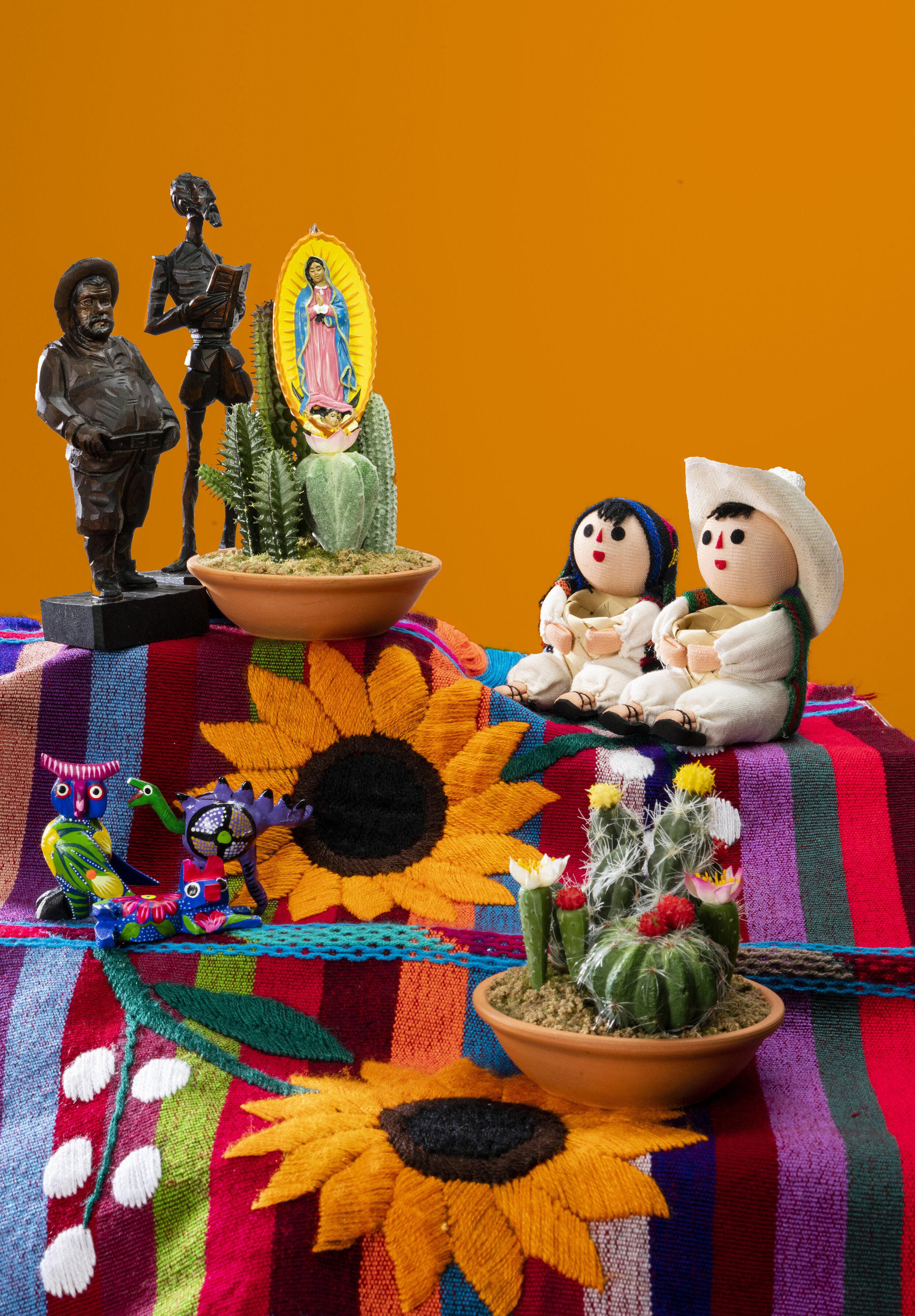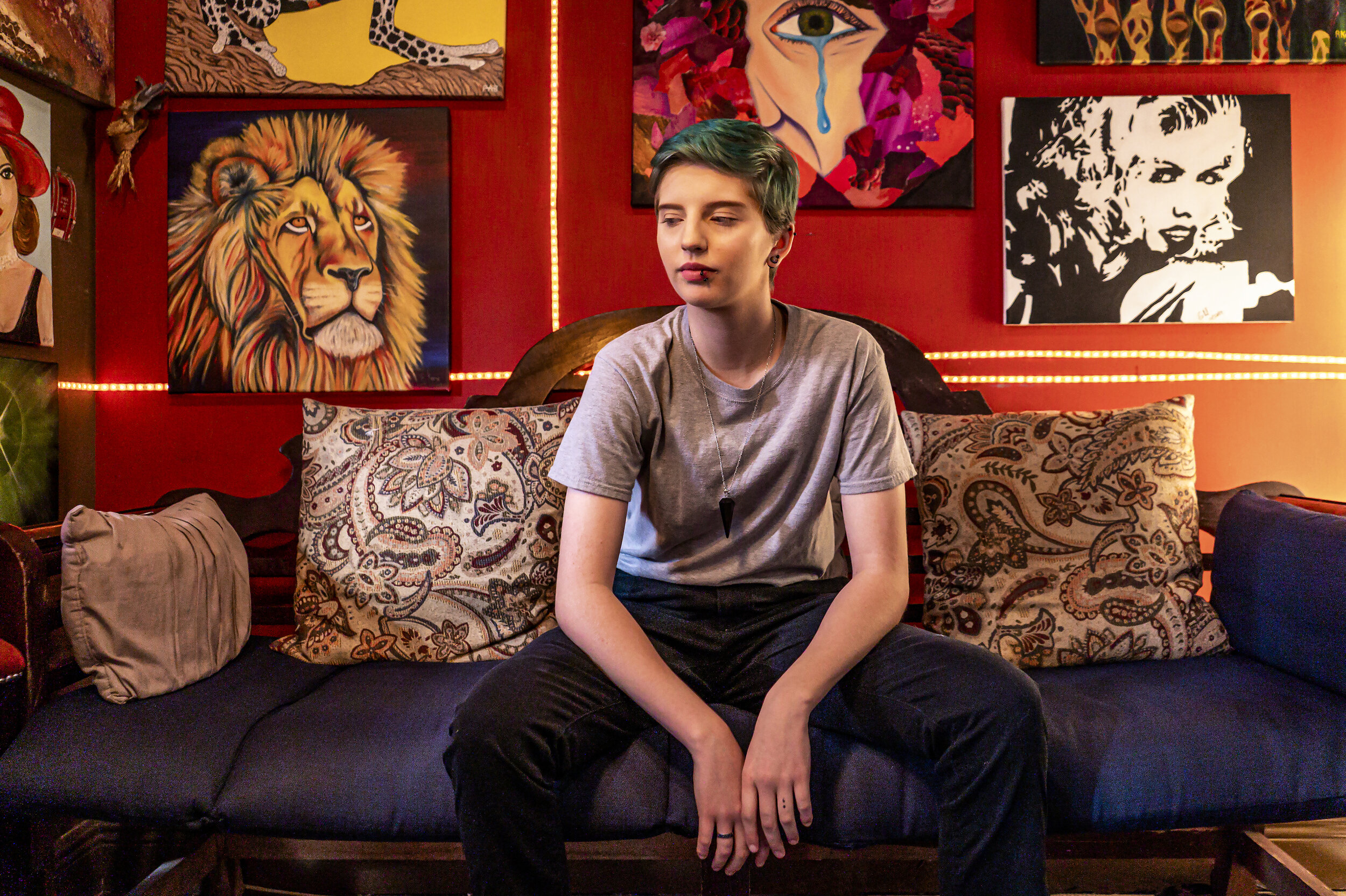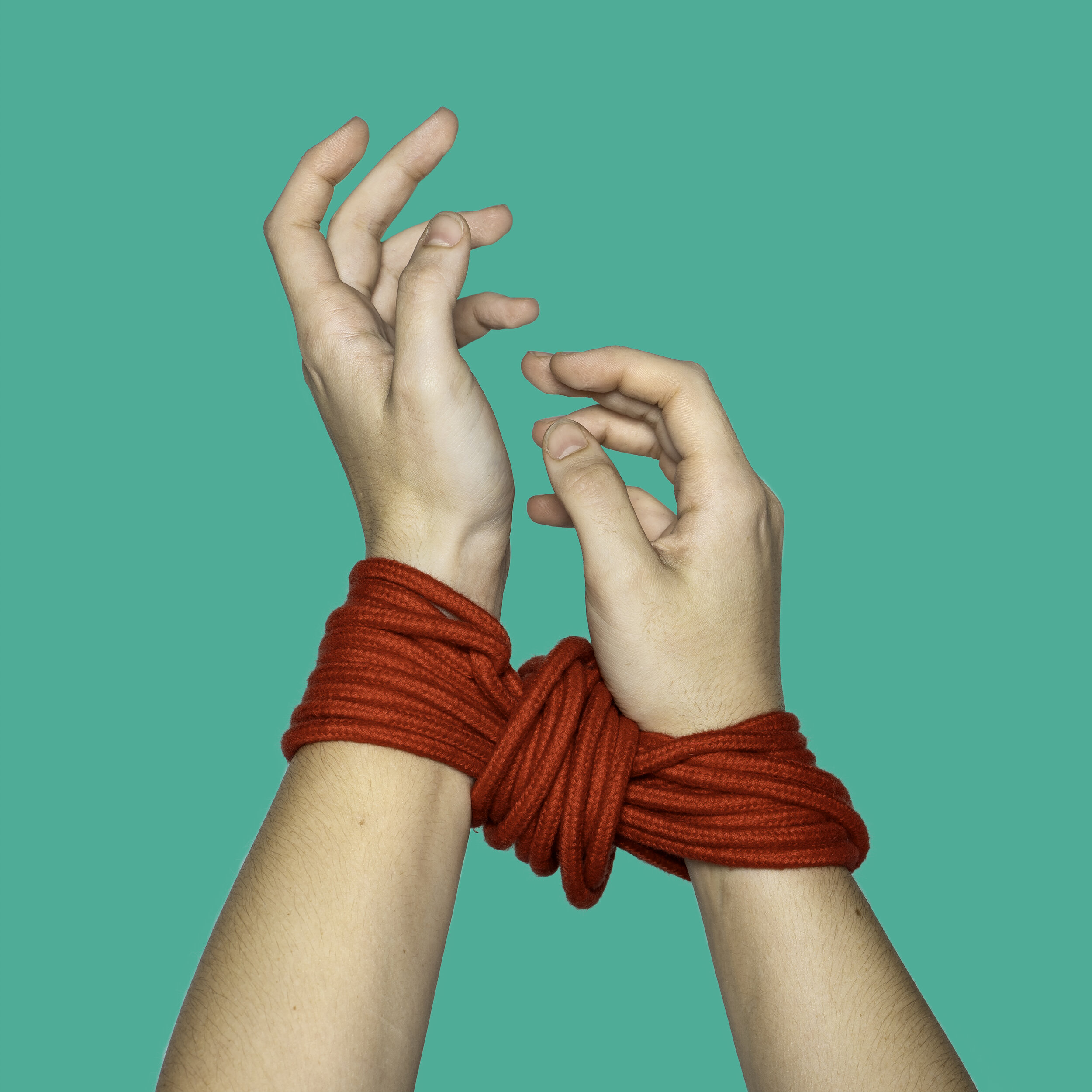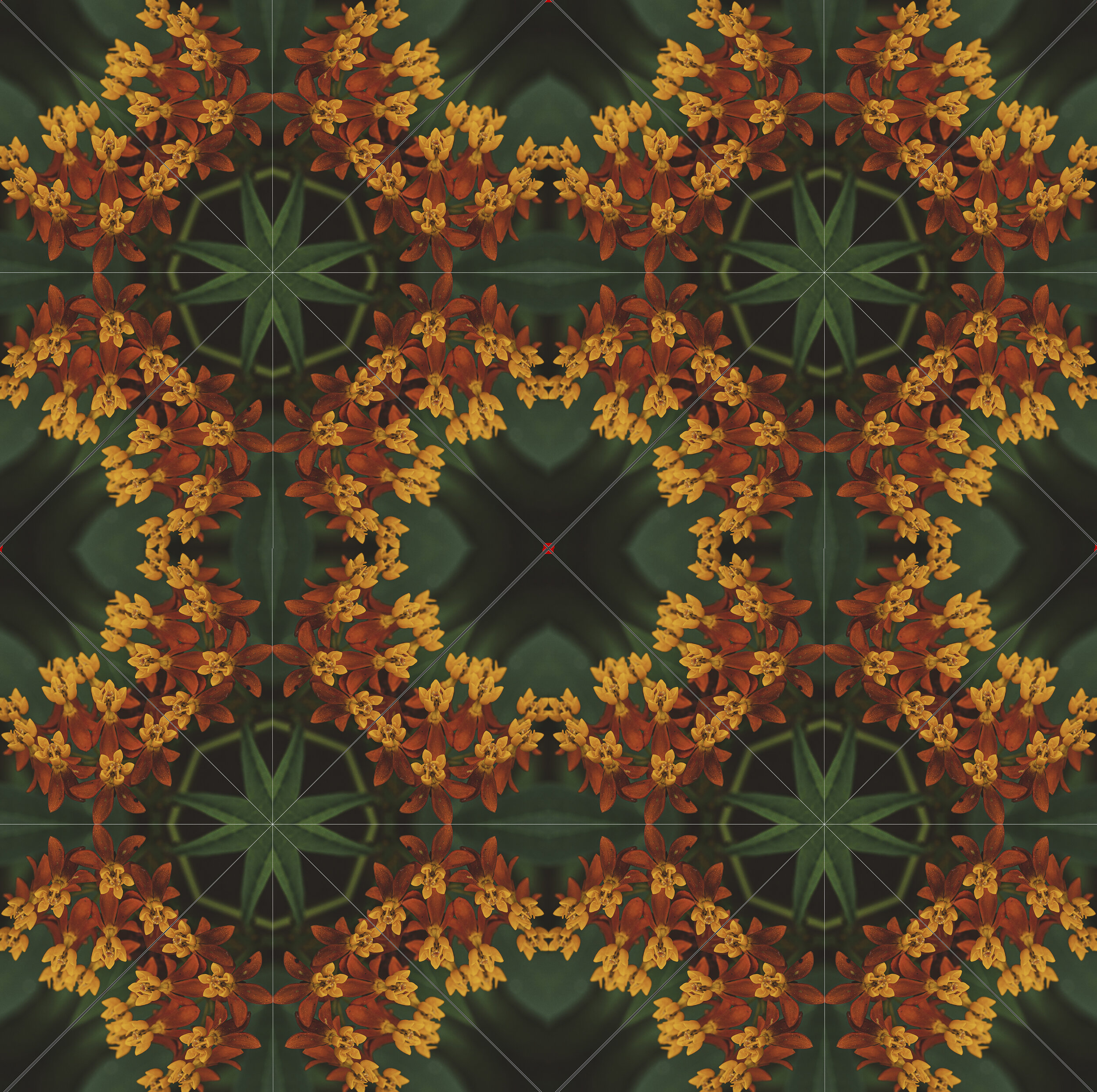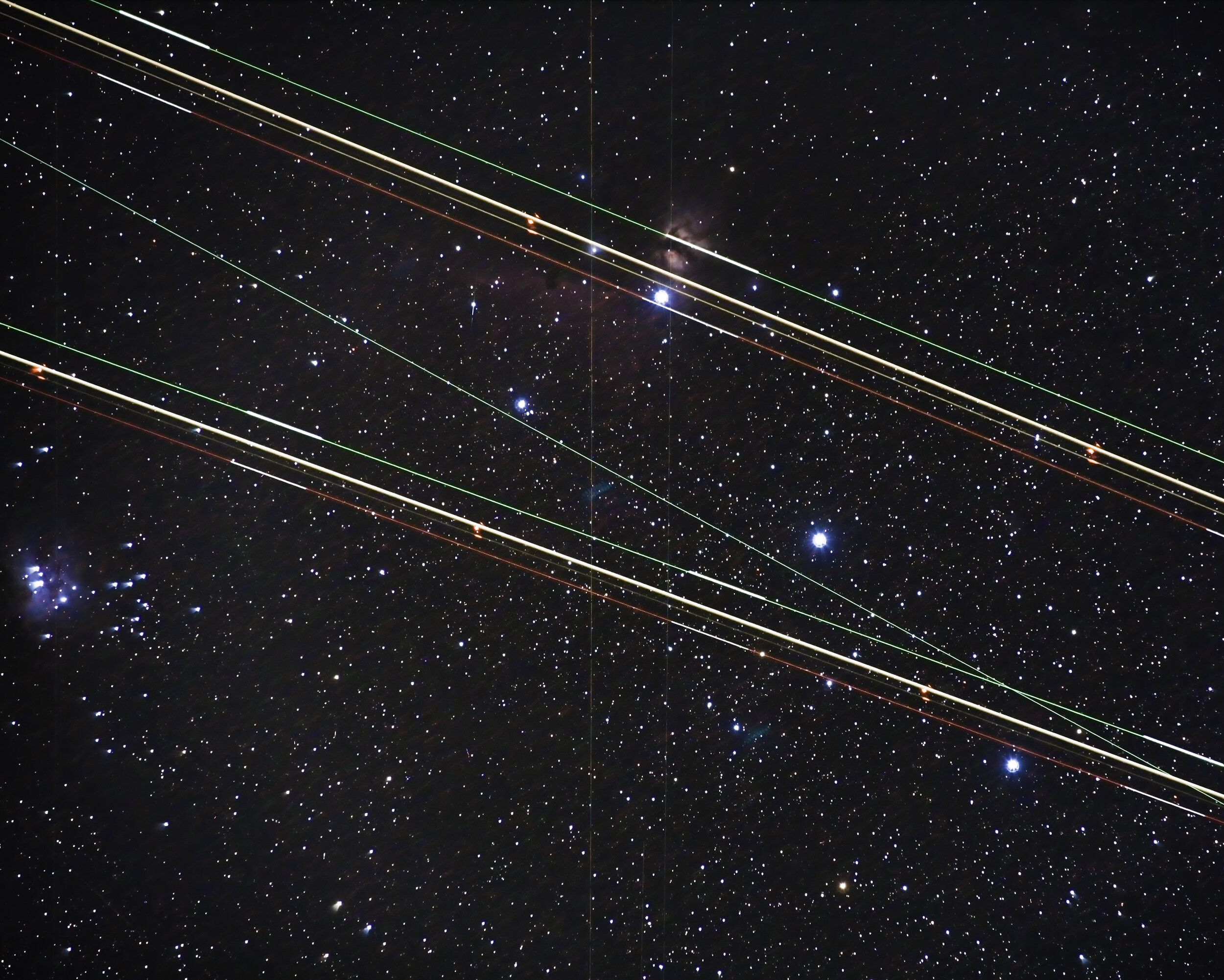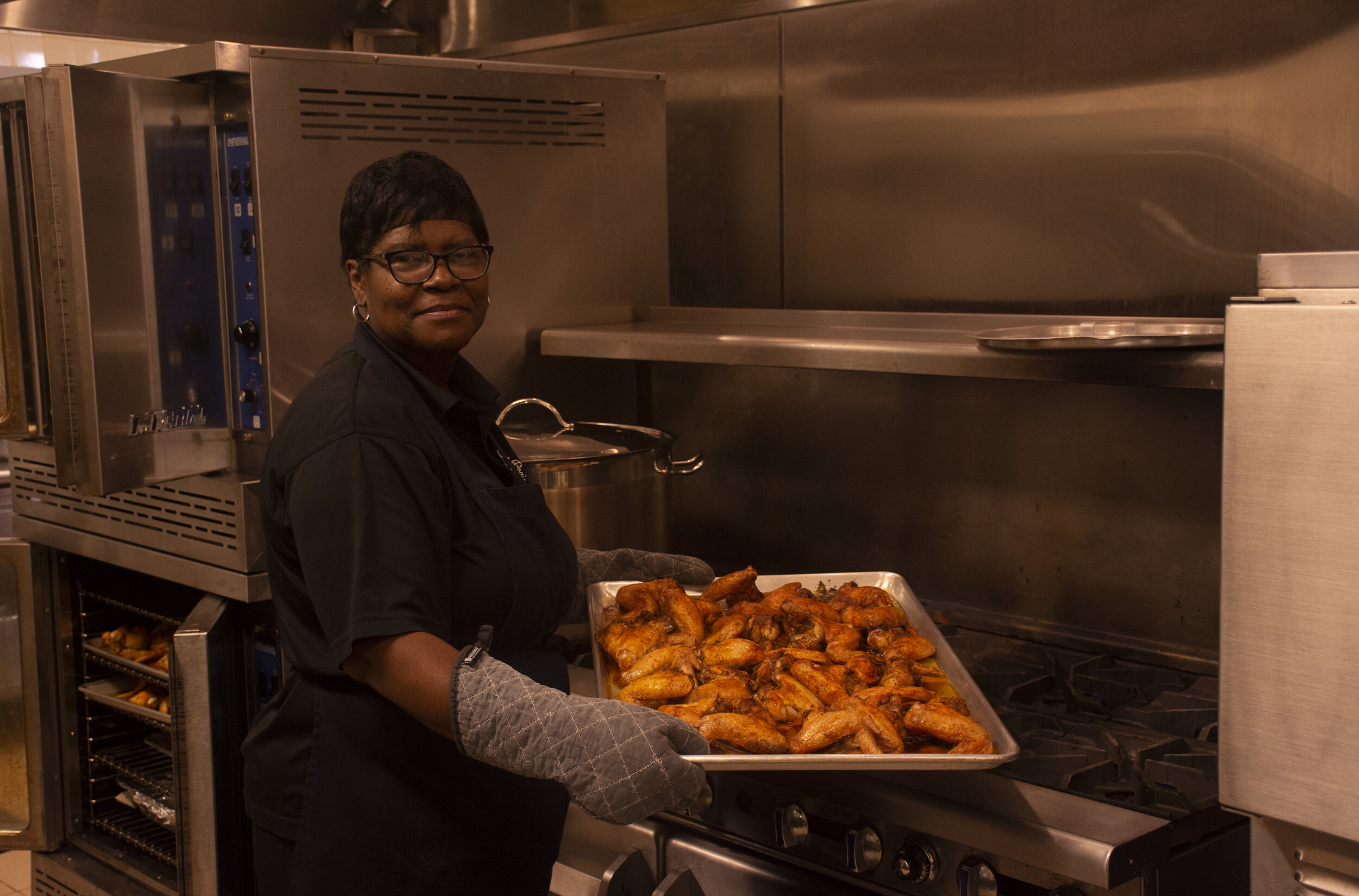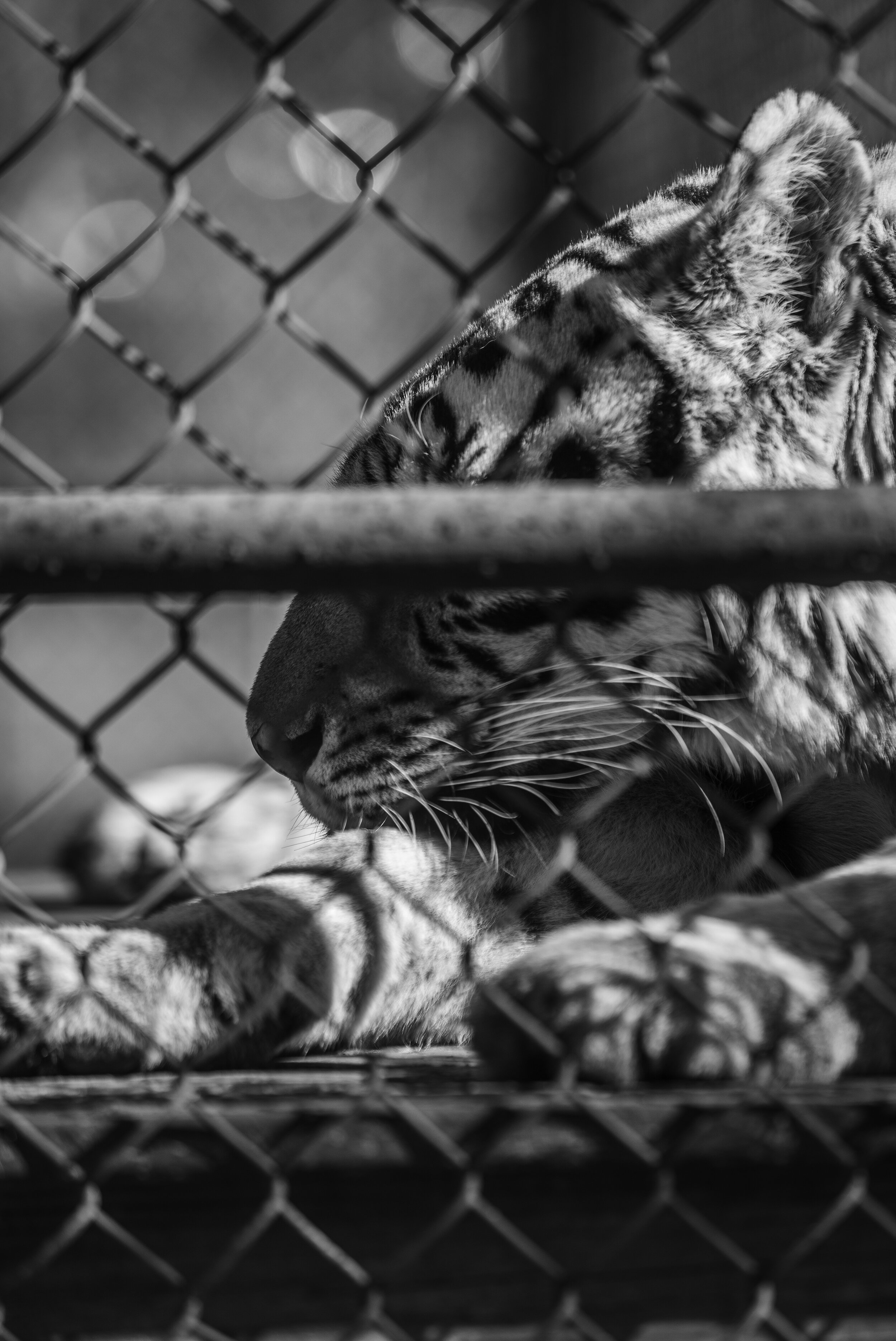THESIS: 2020
July 22 - September 18, 2020
Now in its ninth year, the UCF Thesis exhibition showcases portfolios by recent graduates of the Bachelor of Science in Photography program at the University of Central Florida - Daytona Beach.
The student’s thesis projects are a culmination of four years of study in photography. Their personal investigations bring voice to a variety of interests and issues as broad as mental health, identity, environmental conservation, homelessness, and relationships through the still and moving image.
The UCF- DSC joint AS to BS Photography program offers a holistic photographic education which incorporates strong technical, creative, and critical skills to empower graduates for life-long success in a variety of professional photographic fields. The UCF- DSC partnership provides students the opportunity to work with a diverse professional faculty in an environment that encourages excellence and innovative approaches to photography that will position graduates to compete in a rapidly changing industry.
Featuring the work of:
Sybil ‘Felicia’ Allen • Sebastian Rojas Arevalo • Taylor Attebery • Joelle Cardinale
Eddie Guerrero • Bianca Jeiselle • Connor Peters • Faye R. Glover - Walker
MEET THE ARTISTS
Sybil ‘Felicia’ Allen
My camera and my curiosity have led me on an amazing path. Photographing people in their environment is my passion. I love roaming the streets, moving in close to an individual and capturing a glimpse of emotions as I ask, “How are you today?”
Having my viewers feel something for a stranger, especially if they are unfamiliar or uncomfortable with them, is imperative. There are many reasons we don’t get the opportunity to look closely at someone living on the streets, mainly because we have trained ourselves to look away. I want to give people the chance to look closely and focus on the person in front of them. I want you to look into their eyes, look at their skin, their wrinkles and their body language. Hopefully by doing this you will be able to see something of yourself in the person portrayed.
My choice to take portraits of the homeless has afforded me the opportunity to make a difference in their lives. I’m giving the homeless community a voice by showing their personalities and their joys. These images are not of individuals just sleeping on the streets, someone pushing a shopping cart filled with their possessions, or someone begging for food or money. I portray them just like any other member of society. These images show you who they are rather than what they are labeled: ‘homeless.’
I hope you will leave these images with a new understanding of a misrepresented community, one that is overlooked and often misunderstood. You will see that they are just like you and me, a person with feelings; a human.
Click to view the full size images.
Sebastian Rojas Arevalo
Ofrendas
I moved to the United States from Mexico when I was a toddler, this caused a cultural separation with my identity. My only connection to my culture has been through the handful of Mexican holidays my parents celebrated, Dia De Los Reyes (Three Kings Day), Día de la Independencia (Independence Day), and El Dia De Los Muertos (The Day of the Dead).
To me, no other holiday was as magical and more Mexican to me than the Day of the Dead; no other holiday connected me to my culture more than that day.
The Day of the Dead is a three-day holiday that originated in ancient Pre-Colombian Mexico, based on the ninth moth of the Aztec calendar. It was a month long ritual where they honored their ancestor and the “Lady of Death”, today known as La Calavera Catrina. Today, the condensed version of this ancient tradition is broken up into two days, The day of the Innocents and the day of the Dead. Millions of Mexicans across the country make elaborate Ofrendas (Alters) in their homes, dedicated to passed loved ones. These Ofrendas are decorated with the dead’s photographs and favorite food, drinks and toys. This day gives the family a connection to past memories of loved ones
I still remember asking my mom who the people in the pictures were and why she was making this weird alter. I remember finding some comfort in the stories she told me about Mexico. For a quarter of a century I had a cultural disconnect, I knew where I came from just not what it meant. Even to this day, after years of going back forth from my countries, I still have this glamourized mainstream image of what Mexico is.
Ofrendas is a project of self-discovery, a small colorful connection to the culture I am estranged from. A connection to the past that continues to shape my identity.
Click to view the full size images.
Taylor Attebery
Being
There is beauty and courage in discovering self-love; to be brave enough to take a deep dive into oneself and unbury the hidden truths that lie within. Pressure to conform and feel accepted has a great influence on us all. The bravery to live authentically and unapologetically is inspiring. We harbor memories of battles deeply etched in our scars; still fighting for a reflection that mirrors our spirit. Our identity is uniquely up to all of us, and as we expand on what gender means, the fluidity of the word, my hope is for us all to feel at home in our bodies.
I wore a mask for so long; transitioning has forced me to face my hidden truths. This has been as challenging as it has been rewarding. All my life I had a conflicting battle within my mind, tormenting me to do something, but being too terrified to even whisper the words. My body, this thing that is supposed to protect me and keep me whole, is my cage; the place I long to escape. The moment the needle kissed my skin, I felt a sweet relief flow throughout me. I was released from my life sentence of imprisonment within flesh and bones. At last the mask I had worn, fell away. I am free.
Click to view the full size images.
Joelle Cardinale
Rule 34
My work focuses on erotic subcultures, bringing about the notion of rule 34: if it exists, there is porn of it. Here I challenge the notion of what fetishism or paraphilia is and could be. I use minimalistic art with vibrant colors as a vessel to transcribe my thoughts on extracting fetishes from their sexual environment and place them into a simplified form for contemplation. Society tends to avoid the topic of sexual pleasure as taboo and condemns fetishists. I am offering the audience a way into the fetish world without vulgarity. These images are meant to be eye candy for the fetish world, and I hope this series opens peoples minds into the possibilities of what a sexual fetish can be.
Click to view the full size images.
Eddie Guerrero
Florida Captivity
When I was a child, my family moved from Perú to the United States. The language barrier made it difficult for me to communicate with people, so I stayed away from them. As a result, I lacked many friends. However, I found myself interacting with animals instead. Therefore, my mother would frequently take me to the zoo, where I enjoyed seeing exotic animals up close and personal. Zoos gave me a way to meet and befriend new animals. When I began this photography program, I was very excited to revisit and rekindled this love for animals at the zoo. However, when I started to photograph these animals, I noticed that they weren’t all that happy. Things were not like how I remembered them as a child. Cages were more apparent, as well as the demeaner of the animals. They looked zoned out and without a purpose. Natural habitats became steel cells and a place of confinement. These animals were still interesting to me, but they were also caged for other people’s enjoyment. I wish these animals could roam their natural habitats, but most of them would not survive outside of captivity. Nevertheless, if it wasn’t for zoos, I wouldn’t have discovered my love for animals in the first place. I see sad animals, but I also see happy children discovering these creatures. In general, Zoos can be both good and bad, it depends on your perspective. With that being said, this project is meant to show a more realistic side of these animals inhabiting the zoos throughout Florida.
Click to view the full size images.
Bianca Jeiselle
Invasive Florida
As a native Floridian raised a city girl, I never felt as connected to the natural environment as much as the concrete jungle. My first time truly seeing nature was in Puerto Rico with my father when we visited El Yunque (The Rainforest). I was in awe at the beauty that surrounded me: glistening water, emerald leaves, trickling waterfalls, and an abundance of animals. I immediately wanted to explore more of my homeland’s offerings. Camping, hiking, and photography became my hobbies as my love for nature grew. Plants became intriguing as I learned the names of the species, their origins and benefits. I wanted to know more about natural Floridian habitats and soon learned the native environment is being destroyed by both urban development and large populations of invasive plant species.
Commonly known as weeds, 31% of Florida’s ecosystem is made up of invasive plants, which can alter the natural processes of water, fire, and earth, throwing everything off balance. Invasive species affect water availability, cause soil damage and erosion, and suffocate native vegetation. Most invasive species cannot be burned, so eliminating them is a challenge.
Plato believed that true reality is not found through the senses but rather through forms. Much like Plato’s beliefs, the kaleidoscope forms intertwined reflections through a multitude of fragments, shapes, and colors creating a visual suggestion of the amplification of invasive species.
In this work, I focus on plant species native to and invasive in Florida. The kaleidoscope plays an important role, asking the viewer to contemplate what they are visually seeing in front of them and weighing the consequences of planting invasive species. We need to protect what we have left of our natural environment. Whether it’s in Florida, the Caribbean, or across the sea, once it’s gone, it’s gone for good.
Click to view the full size images.
Connor Peters
Existential
To me, being human is to question our place and purpose in life. Many live their lives unconsciously following
societal norms and don’t give their place in the universe a thought. We have taken certain aspects of life for granted and in some ways, confined ourselves to just a few square miles of living by limiting our connection with the universe.
While stargazing in a remote area one night, I realized I was staring at our Milky Way. The fact that I could see it with my own two eyes astounded me as I, like so many of us, grew up in cities flooded with light pollution! This launched a string of thoughts about just how massive the universe is. I felt the driving need to show people what I saw: the beauty of the night sky and our home galaxy.
‘Phaneron’ is defined as “the world as experienced, filtered through our senses,” and is completely different from reality which exceeds the boundaries of the five senses. Only with the help of technology can we ‘see’ beyond our sensory limitations and experience this reality. I want people to see the beauty of the cosmos and what it has to offer us. In a world that has shrunk with the growth of technology, and social media delivering the world and its news directly to our hands, I found comfort in knowing that there is so much more to be seen and experienced than what we think we know. Where do we explore next?
Through astrophotography, I found myself contemplating what it meant to exist. As far as we do know, we are the luckiest species in existence because our planet can sustain life and we have evolved to the point where we can appreciate that fact with cognitive thought. This cognizance and awareness have led us to question.
But we are an arrogant species to think we are so special, that in this expansive universe of endless possibilities, we are the only ‘intelligent’ species to exist.
But we do exist.
Now, I question life, appreciate that insane ability to ask why, and feel more aware of the speck of dust in the cosmos we call home.
Click to view the full size images.
Faye R. Glover - Walker
Let’s Cook
As a child growing up in rural Central Florida, I remember food being at the center of most family events. When we came together as a family, regardless of the circumstances be it a birthday, funeral, reunion, Sunday dinner, or even a wedding; food was in the midst of the affair. Our gatherings, whether Indoor, outdoor, small or large were all associated with food.
I have the fondest memory of sitting on the barstool in my mother’s kitchen watching her make sour cream pound cakes and humming hymns. Those smooth songs that she hummed are the same songs of praise that I find myself singing today when I’m baking. There’s an all too familiar sense of peace and joy that fills my kitchen and that’s why I have a passion for baking.
I have close friends, family members, neighbors and professional acquaintances who also have a passion for cooking. Home cooks, caterers, bakers, professional chefs, new cooks and even little nieces with their “Easy Bake” ovens are all part of our collective memories of food, cooking and kitchens.
Join the celebration of cooking, baking and food memories as you catch a glimpse of bakers, grillers, moms, dads and culinary artists immersed in their elements and making their signature dishes. Don’t be surprised if you find yourself singing and humming songs memorized long ago in mom’s kitchen!
Click to view the full size images.
Sponsored in part by the State of Florida, Department of State,
Division of Cultural Affairs and the Florida Council on Arts and Culture.



